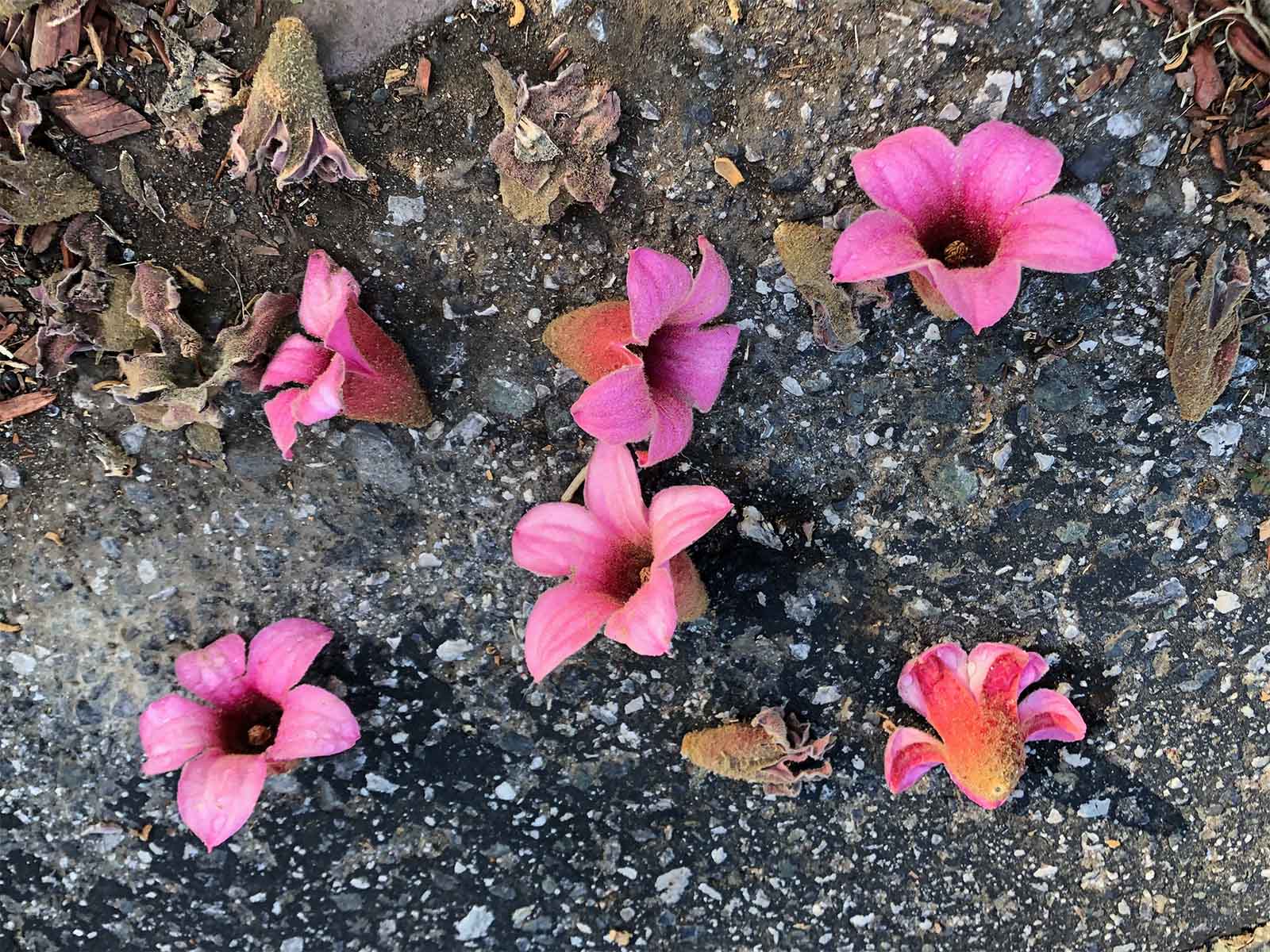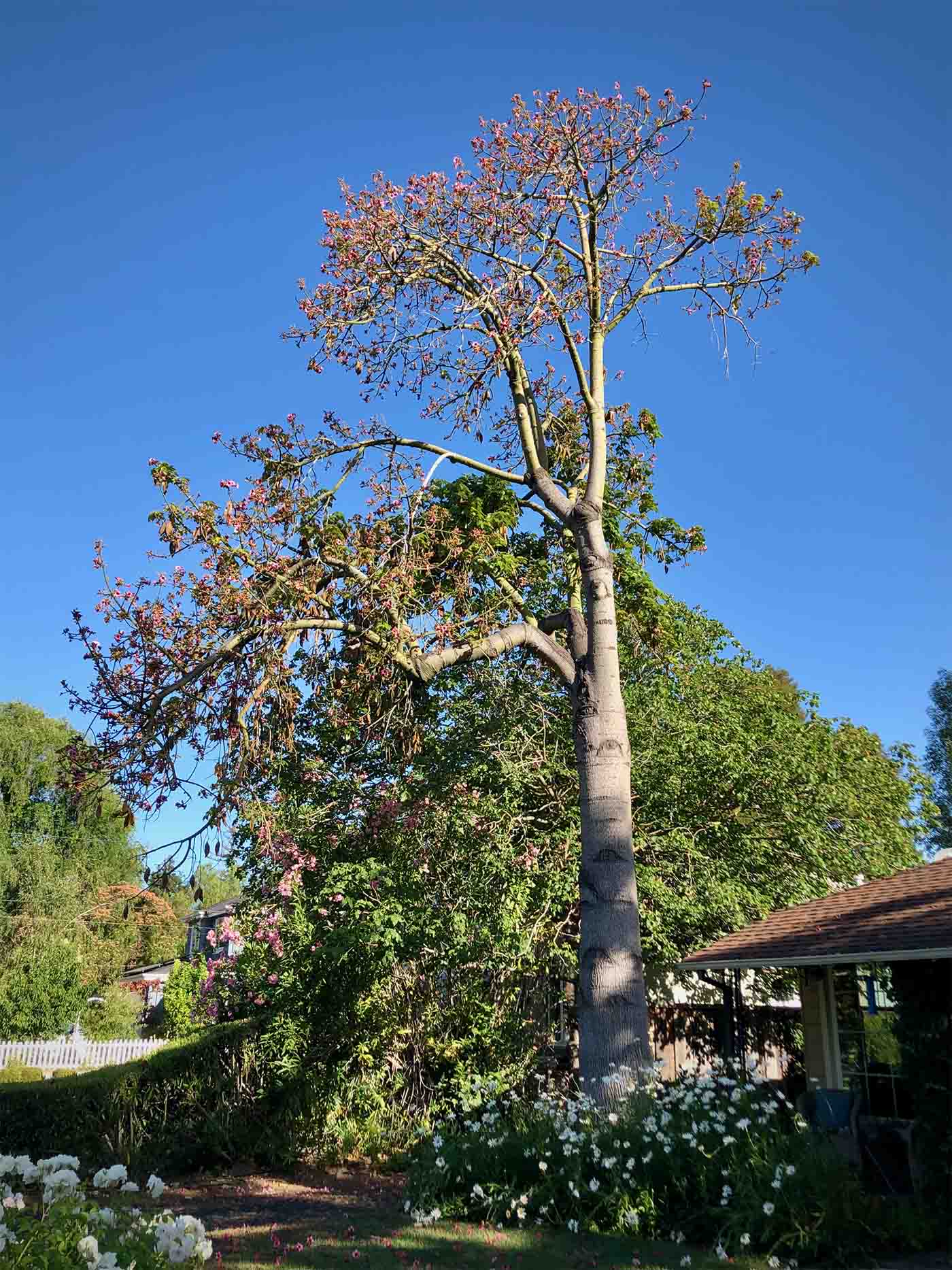Brachychiton discolor
 pink flame tree, lacebark
pink flame tree, lacebark
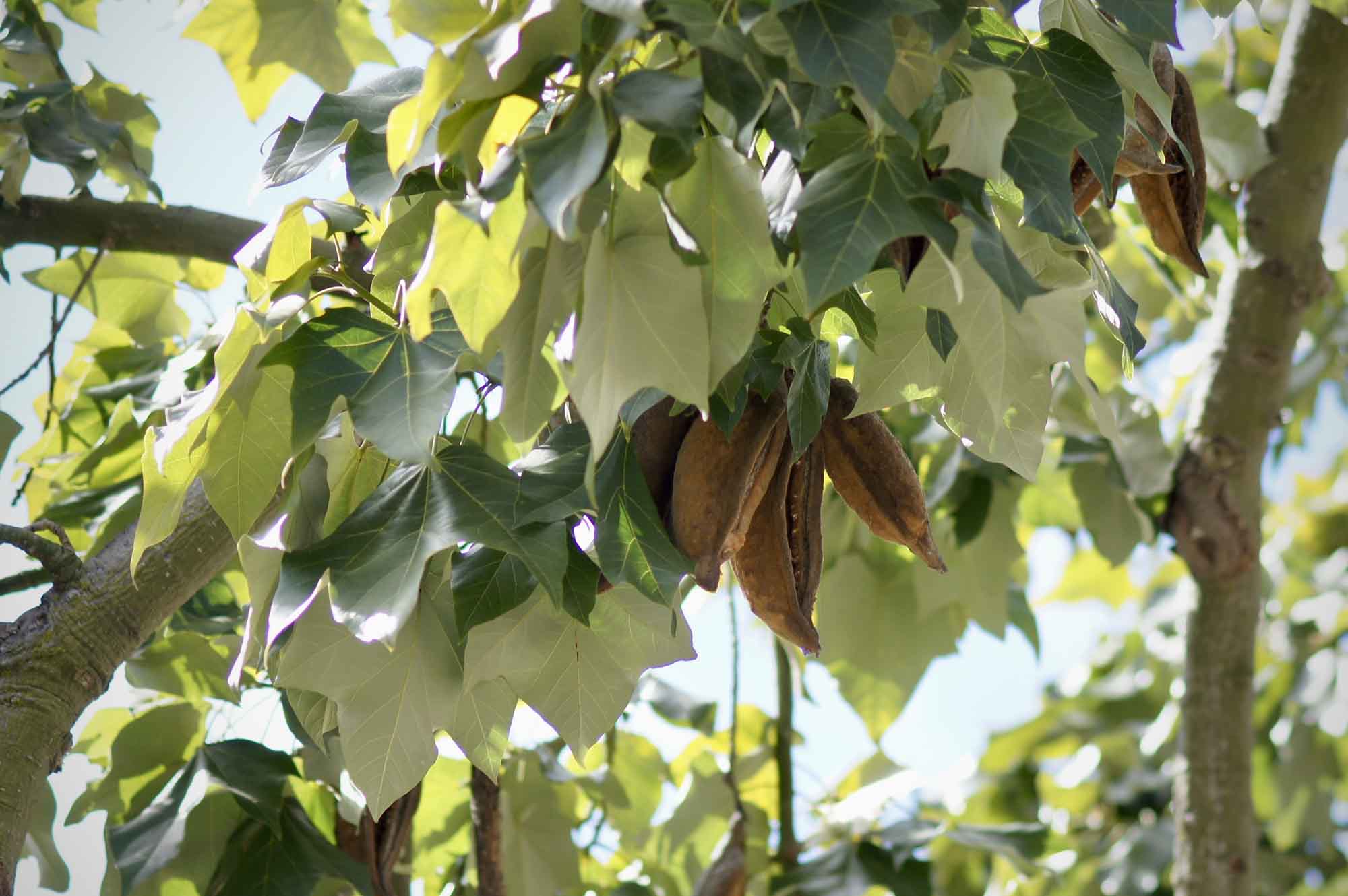
Identification note: The Menlo Park specimen described here is definitely Brachychiton discolor. The two specimens on Stanford Avenue on campus may be a hybrid of B. discolor, perhaps with B. acerifolius. The juvenile leaves of both those species are often deeply lobed, with lobes upon the lobes. The adult leaf form of B. discolor is not clearly in evidence on the Stanford specimens. This entry will be updated once the identification has been sorted out.
Resembling the Illawarra flame tree in general appearance, but having a distinctive bark when mature, lacebark is immediately distinguishable by the flowers, flower-buds, and pods. The bell-shaped, nectar-bearing flowers have about five pointed lobes and are about 1½ inches across, deep pink inside and on the outside on the fringe, but mostly enclosed in a rusty down sheath that apparently consists of the fused sepals. The buds are enclosed in the same down and so is the pod, which is canoe shaped and 4 or 5 inches long. Some of the leaves are five-pointed with pale felt underneath and could be mistaken for leaves of Platanus racemosa (California plane tree), but others have three lobes or only one, and others again are very fancy with lobes upon the lobes.
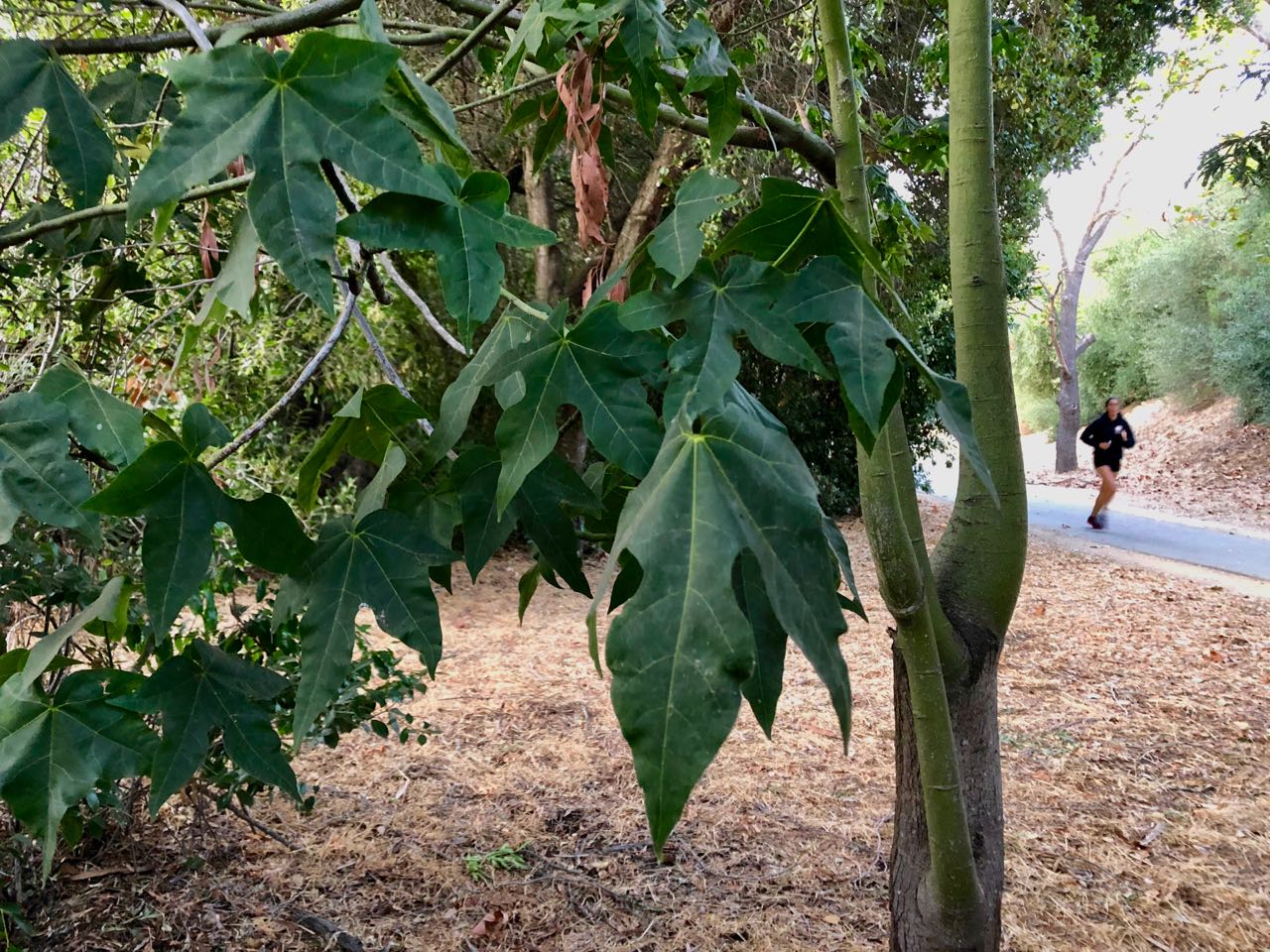
A 9 foot tall specimen was planted in the Inner Quad in 2024, under the rather sparse canopy of the floss silk tree. Two on and near the cycle path connecting Santa Fe Avenue to Stanford Avenue may be hybrids with B. acerifolius. The one along the path has dark smooth pods, unlike the fuzzy brown ones of B. discolor, but both produce pink flowers. A large pink flame tree is at 416 O’Keefe Street in Menlo Park. It was planted in 1958 and was 2 feet in diameter and 40 feet tall by 2003. Three young ones along the Campus Drive East side of 563 Salvatierra Walk were an inch in diameter in 2003; two survived only a couple of years, the last succumbed a year after that.
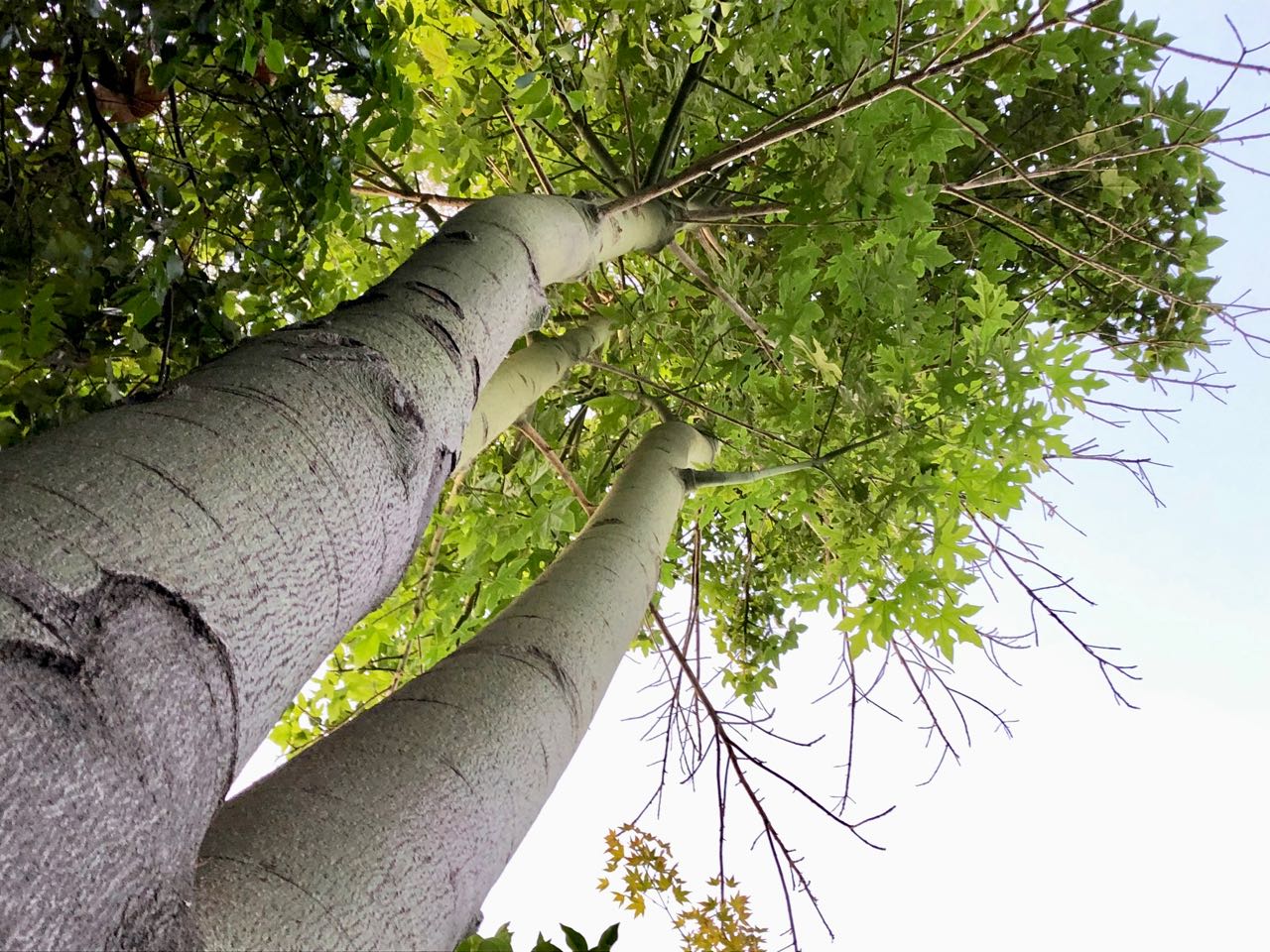

Name derivation: Brachychiton – from Greek, brachys, short and chiton, a tunic, a reference to the coating on the seed; discolor – Latin, of two different colors.
About this Entry: The main text of this entry is from the book Trees of Stanford and Environs, by Ronald Bracewell, published 2005. John Rawlings subsequently documented the tree removals. Minor edits, all locations verified (Oct 2019, SP). Menlo Park location added; note on possibility of hybrids added; some edits (Jun 2023, SP). Quad location added; Stanford Avenue bike path specimen’s pods described (Apr 2024, SP).

